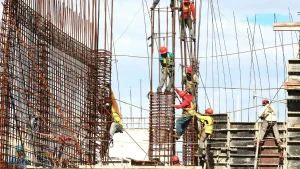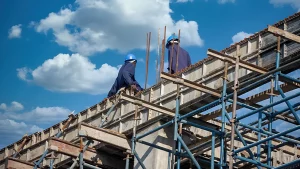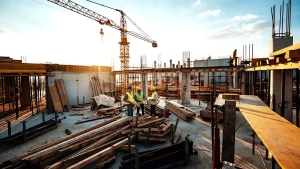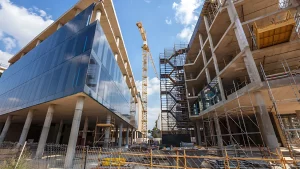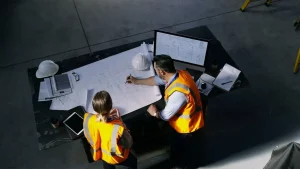Civil engineering, the cornerstone of urban development, has been instrumental in shaping our built environment. As cities like Accra burgeon and modernize, the significance of civil engineering in building construction becomes paramount.
The Historical Evolution of Civil Engineering
The Ancient Epoch
Civil engineering’s roots trace back to ancient civilizations. The Egyptians, with their monumental pyramids, showcased early engineering marvels. The Romans, with their intricate aqueducts and expansive road networks, demonstrated a profound understanding of infrastructure. The Great Wall of China, an architectural marvel spanning thousands of miles, was built to protect Chinese states from raids and invasions. Its construction over rough terrains and steep mountains showcases the early civil engineering capabilities. Source
The Renaissance and Beyond
The Renaissance, a period of cultural and scientific revival, also witnessed significant advancements in engineering and architecture. Innovations in design, materials, and construction techniques led to iconic structures like the Florence Cathedral, which boasts the largest brick dome ever constructed. The bridges and canals of Venice, built on a lagoon, required innovative engineering solutions to ensure stability and longevity. Source
The Modern Epoch
The 20th and 21st centuries have ushered in unprecedented advancements in civil engineering. The rise of skyscrapers, like the Empire State Building and the Burj Khalifa, required innovations in materials and construction techniques. Expansive bridges, such as the Golden Gate Bridge and the Akashi Kaikyō Bridge, were built to withstand earthquakes and other natural disasters. Intricate transportation networks, including highways, tunnels, and airports, were designed to handle increasing populations and demands for connectivity. Source
The Many Facets of Civil Engineering
Structural Engineering
This domain ensures that structures, from the tallest skyscrapers to the smallest homes, can withstand external and internal stresses. It delves deep into the science behind the strength and stability of structures, ensuring safety and durability. Structural engineers use advanced materials and techniques to ensure that buildings can withstand natural disasters, such as earthquakes and hurricanes. Source
Geotechnical Engineering
Before laying the first brick, it’s crucial to understand the ground. This branch studies the earth’s behaviour, ensuring that foundations are solid and structures remain stable. Geotechnical engineers analyze soil and rock samples, conduct field tests, and use computer simulations to predict how structures will interact with the ground. Source
Environmental Engineering
In today’s eco-conscious world, construction projects must harmonize with the environment. This branch ensures projects are sustainable, causing minimal ecological impact. Environmental engineers design systems for water treatment, waste management, and pollution control. They also assess the environmental impact of construction projects and develop strategies to mitigate negative effects. Source
Transportation Engineering
From congested urban roads to sprawling highways, this domain ensures efficient and safe transportation systems. Transportation engineers design roads, bridges, and tunnels to facilitate smooth traffic flow. They also develop public transportation systems, such as subways and bus networks, to reduce congestion and promote sustainable travel. Source
Civil Engineering’s Profound Impact on Building Construction
The Design Phase
Here, visions are translated into blueprints. Civil engineers collaborate with architects, ensuring designs are feasible, safe, and aesthetically pleasing. They use computer-aided design (CAD) software to create detailed plans and simulations, testing different materials and construction methods to find the most efficient solutions. Source
The Construction Phase
This phase sees blueprints come to life. Civil engineers oversee construction, ensuring adherence to safety norms and quality benchmarks. They coordinate with contractors, supervise construction sites, and ensure that projects stay within budget and on schedule. Source
Maintenance and Beyond
Buildings, like all things, age. Civil engineers ensure they age gracefully, overseeing maintenance, renovations, and upgrades. They conduct regular inspections, assess wear and tear, and recommend repairs or replacements to ensure the continued safety and functionality of structures. Source

Accra’s Architectural Landscape: A Civil Engineering Perspective
Accra’s blend of history and modernity offers a unique canvas for civil engineers. The city’s colonial-era buildings stand alongside modern skyscrapers, presenting both challenges and opportunities.
Urban Challenges
Rapid urbanization brings challenges. Space constraints, environmental concerns, and the need for sustainable development are at the forefront. Civil engineers in Accra must find innovative solutions to accommodate the city’s growing population while preserving its rich cultural heritage. Source
SKAIA Construction’s Role
At SKAIA Construction, we’re more than builders; we’re visionaries. Our projects in Accra reflect our commitment to excellence, innovation, and sustainability. We collaborate with local communities, government agencies, and international partners to deliver world-class infrastructure that meets the unique needs of Accra’s residents.
The Future of Civil Engineering
The realm of civil engineering stands on the brink of a technological revolution. Innovations in materials, construction techniques, and design software promise to transform the industry.
Sustainable Construction
The future is green. New materials and building practices promise eco-friendly, energy-efficient structures. Solar panels, green roofs, and rainwater harvesting systems are becoming standard features in modern buildings. Source
Smart Buildings
Buildings of the future will be intelligent, adapting to their inhabitants and the environment, offering unparalleled comfort and efficiency. Advanced sensors, automation systems, and AI-driven management platforms will revolutionize the way we live and work. Source
Conclusion
Civil engineering is an art and a science. It shapes our world, ensuring safety, comfort, and sustainability. As Accra and cities worldwide step into the future, civil engineers will lead the way, crafting skylines, shaping destinies, and building the future.




